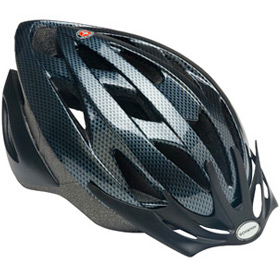How to Fit Your Bicycle Helmet to Best Protect You in an Accident
Written by: Ken Selander Category: Bicycle Accidents So, you’ve purchased a bike helmet and you’re ready to plop it on your head and go riding. Easy, right? Well, yes – but simply strapping that helmet to your head is not going to protect you from injury if you’re not wearing it properly. Follow these tips to ensure a proper helmet fit and to get you rolling safely:
So, you’ve purchased a bike helmet and you’re ready to plop it on your head and go riding. Easy, right? Well, yes – but simply strapping that helmet to your head is not going to protect you from injury if you’re not wearing it properly. Follow these tips to ensure a proper helmet fit and to get you rolling safely:
- The helmet should sit evenly and level on your head – think low, level & snug. It should cover your forehead and rest just above your eyebrows. With the helmet placed level on your head and keeping your head still, look up; if you can just barely see the rim of the helmet, it’s in the correct position.
- Connect the chin strap, and tighten it so that it’s snug beneath your chin. You should barely be able to fit a finger between the strap and your chin. Also, open your mouth by lowering your jaw as much as possible without moving your head (as if you are yawning). The chin strap should tighten and the top of your helmet should pull down slightly.
- Now, push the helmet around on your head. If you can move it more than an inch in any direction, it needs more adjusting. The smaller straps in front and back of your ears will help stabilize the helmet. These straps should come to a V just below your ears. When all is said and done, you should not be able to move the helmet more than an inch in any direction.
Once you’ve got the fit dialed in, check it often as the straps tend to loosen over time. Loose helmets are also dangerous. If it tips (slides?) forward it can obstruct your vision. If it tips backwards it can leave your forehead exposed on impact. Either way, a helmet that moves excessively while riding may not protect your head in a crash. So give your helmet a good wiggle before every ride and make any necessary adjustments before rolling out.
And don’t forget – one crash and its trash. Helmets are designed to withstand only one impact. After a bad crash, it’s time for a new helmet.

